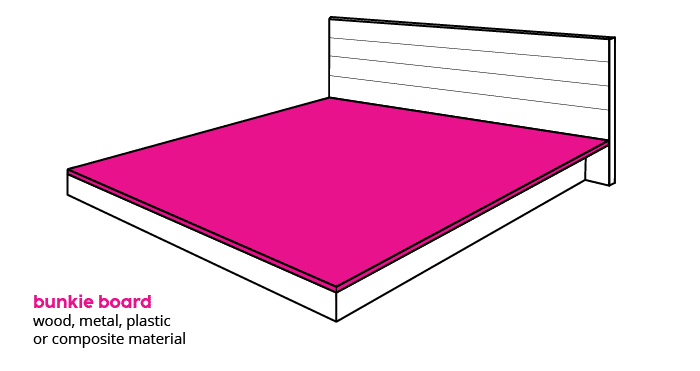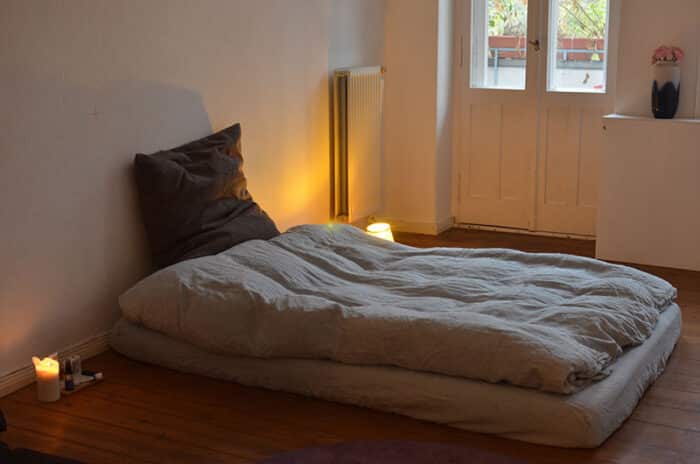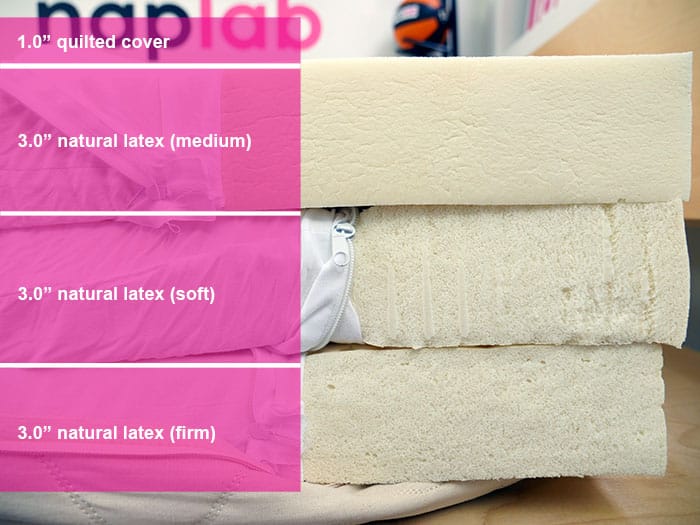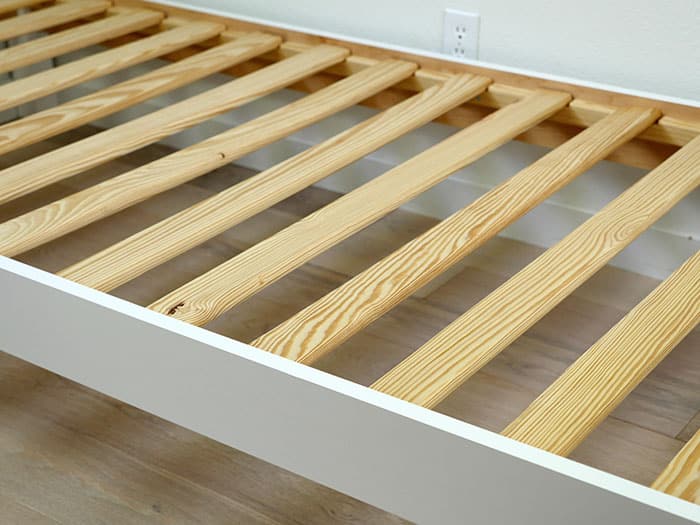Soft mattresses may feel comfortable at first but can cause joint pain over time. They are particularly problematic for people with neck or back issues and may contribute to poor posture.

Today we’ll show you how to make a mattress firmer for better comfort and support. All you need is some creativity and basic accessories like a plywood or a mattress topper.
With that in mind, let’s get started.
What’s In This Guide
Bunkie Board | Mattress Topper | Rotate Your Mattress | Cool the Room | Mattress on Floor | Replace Layers | Check Frame & Foundation | Air It Out | Summary
1. Use a Bunkie Board
Start by placing a bunkie board underneath your mattress. Alternatively, you could also use a sheet of plywood.

A bunkie board can be a cost-effective alternative to box springs, adding support to a too-soft bed. Basically, it’s a thin piece of wood, plywood, plastic, or metal that goes between the mattress and the bed platform.
Most models are 1-2″ thick and work with all mattress types and sizes. They’re relatively cheap and easy to install, resulting in a firmer sleeping surface for most mattresses.
2. Invest in a Mattress Topper
Another solution is to use a mattress topper. This layer of cushioning goes on top of the mattress for a firmer or softer feel.
Mattress toppers are usually made of gel or memory foam, latex, wool, or other materials and range in height from 2″ to 4.” Thicker models can make a bed feel firmer and more supportive.

Ideally, opt for a latex mattress topper. Latex is typically firmer and more durable than memory foam and won’t give you a “sinking” feeling. But bear in mind, you’ll need to like the feeling of latex foam for this strategy to be most effective and comfortable.
Note that mattress toppers differ from mattress pads. The latter are thinner and less supportive, adding a little extra softness to a bed.
3. Flip or Rotate Your Mattress
Most manufacturers recommend rotating your mattress once or twice a year. This practice ensures even wear and tear and can help prevent sagging.
If you have a double-sided mattress, you can also periodically flip it. This can help restore its flexibility and create a firmer feel, depending on the type of mattress.

4. Turn Down the Heat
More traditional memory foam tends to expand and soften at higher temperatures. Therefore, a mattress made from this material may feel firmer or softer, depending on how hot or cold the room is.
With that in mind, lower the temperature in your bedroom by a few degrees. A cooler room will cause the memory foam to feel notably firmer.
For reference, the ideal bedroom temperature is 60 to 67 degrees Fahrenheit.
5. Place Your Mattress on the Floor
Another option is to place your mattress directly on the floor. However, note that many mattresses require a sturdy bed frame, and putting them on the floor may void the warranty.
Always double check with your mattress manufacturer’s warranty terms and whether or not it’s able to be placed directly on the floor.

To help the mattress remain cleaner you want something between the mattress and the floor. That could be a full encasement mattress protector, Titami mat, sheet of plywood, or other water / moisture resistant material.
In addition, you should make a point to vacuum regularly around the edges of the mattress to keep it cleaner.
6. Replace Worn-Out Layers
Some mattresses, especially those made of latex or foam, have several layers. Depending on the brand and model, you may be able to swap the worn-out comfort layers for new ones.
A good example is the Spindle mattress, which features three interchangeable layers. It has a soft layer, a medium layer, and a firm layer.

Customers can order another layer of latex for 30% less than the current price within 25 years of purchase. With this option, you can change the feel of your mattress as needed.
The Nest Bedding Sparrow also has a Lifetime Exchange Renewal program that allows sleepers to exchange the top layer of foam for a new foam at any point during the lifetime of the mattress. This is a great way to provide a new, firmer feel to the mattress as it ages.
7. Check the Bed Base, Frame, & Foundation
A damaged or worn-out bed base / frame / foundation can cause your mattress to sag and feel less firm.
First, check the bed base for loose screws, cracks, and other issues. Try to fix them yourself or reach out to a local furniture repair company.
If your bed base uses wooden or metal slats, check for missing or damaged slats. For the best support, slats should be no more than 3” apart.

If the bed base is beyond repair, place the mattress on the floor or use a bunkie board as a temporary fix. Meanwhile, look for a supportive bed base that matches your mattress size.
The same goes for the box spring or foundation, which can wear down over time. Inspect them for any signs of damage, and then decide what to do about it.
8. Air It Out
There are cases where a mattress may soften due to high humidity. This environmental factor can damage the foam and other materials and cause the mattress to retain moisture.
One solution is to remove the sheets, blankets, pillows, and mattress covers and then open the windows to air out the mattress. Alternatively, leave it out for a few hours.
A Too-Soft Mattress Can Become a Health Hazard
Most experts agree that sleeping on a too-soft mattress can lead to neck or back pain and other aches. Over time, this habit may cause spinal misalignment and posture problems.

If your mattress doesn’t feel firm enough, take the steps described above. Make sure you also check the trial period and warranty. Many mattresses come with a one-year sleep trial period during which customers can return them for a full refund.
As a final word, remember that your mattress has a limited lifespan. If it’s older than eight to 10 years, it may be time to replace it. See our mattress buying guide to understand your options and make an informed decision.



